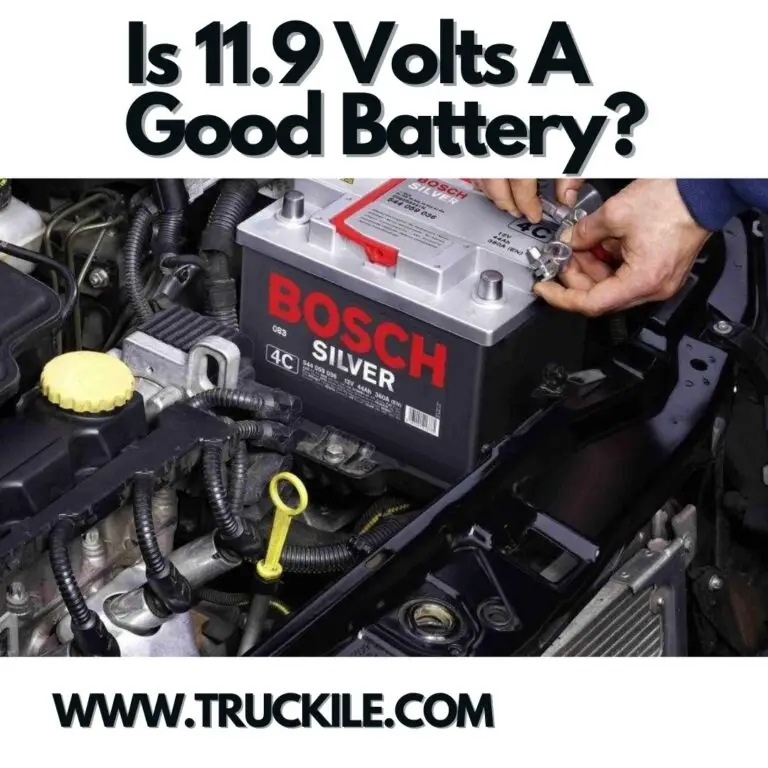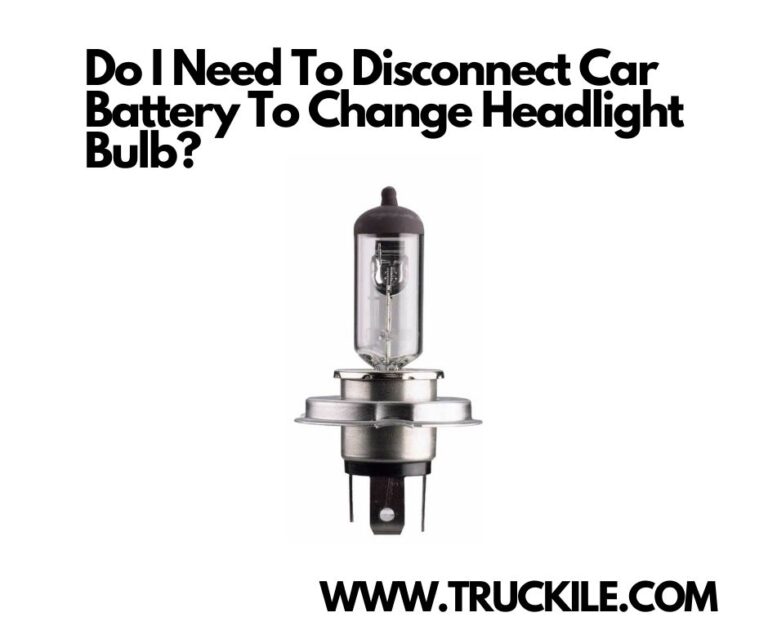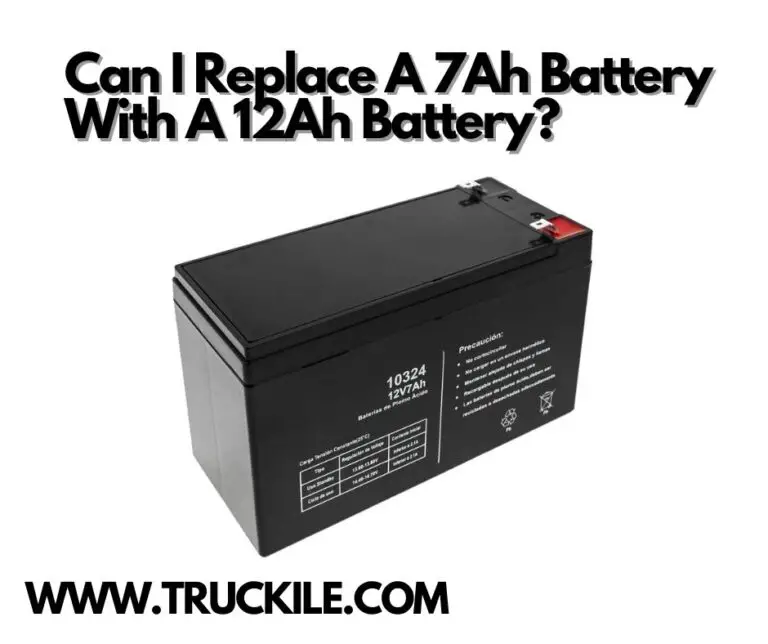Is It OK To Put A Higher Amp Battery In A Car?
Is it OK to put a higher amp battery in a car? A simple question, but there’s much more to it than what’s initially apparent.
Let’s get started.
Is It OK To Put A Higher Amp Battery In A Car?
That is a very tough question to answer. Is it okay to put a higher amp battery in a car? It depends on how you look at it. If you want to start your car every time and not worry about your battery, then yes. If you want to do something that will actually increase performance, then no.
No, because the charging system will never take advantage of the extra capacity.
You need the same type of battery for your vehicle that was originally installed by the manufacturer. If it was an optima yellow top (which is not actually a high amp battery), then that’s what it needs. A group 24 or 25 would be fine. If you want to make sure it starts every time and doesn’t die, get one with a high CCA (cold cranking amps) rating.
Does A Higher Ah Battery Give More Power?
If you are wondering whether a bigger battery with a higher Ah rating will do more work, the answer is yes. The reason for this is that the higher Ah battery will have more energy available to use when you need it. This means that the amount of work it can do will be greater than a smaller battery.
However, if you want to know if a higher Ah battery is going to give you better energy efficiency, then the answer is no. Energy efficiency depends on how well the battery is able to store and release energy as well as how much energy it uses in the first place.
Will The Wrong Size Battery Damage A Car?
If you’re having trouble with your car battery, one possible cause could be an incorrect size. But how can you tell for sure?
Whether or not you have the correct size battery for your vehicle depends on two things:
Group size: This is the physical size of the battery and must match your vehicle’s specs. If the group size is too small, the battery won’t fit into the tray or cradles properly. If it’s too large, it won’t fit in there at all. You can get a recommendation for your car’s group size using Advance Auto Parts’ Battery Finder tool or by using any other resource that lists specs for your make, model, and year.
Cold-cranking amps (CCA): This is a rating of how much current the battery can deliver in cold temperatures. The CCA should be at least as high as the manufacturer recommends — higher is even better — but if it’s lower, you should be OK as long as you don’t typically drive in extreme cold weather and/or don’t often use accessories like stereos.
Is A Higher CCA Battery Better?
Cold Cranking Amps (CCA) measures a battery’s ability to start an engine in cold weather. The higher the CCA, the better a battery is at starting an engine in cold weather. However, the CCA of a battery does NOT mean it will have more power. For example, a battery with 400 CCA will not necessarily have more power than a 300 CCA battery.
Batteries with higher CCAs are designed to be used in colder climates, and batteries with lower CCAs are designed to be used in warmer climates. If you live in a warmer climate, you do not need a high CCA battery because your car should start fairly easily even on colder days. However, if you live in an area that has very cold winters, you would want to get a battery with a high CCA so that your engine will start and run smoothly during those colder months.
In summary, the CCA of your car’s battery does not necessarily mean it has more power than another battery with a lower rating. It simply means that the higher the CCA rating, the easier it is for your car’s engine to start on cold days.
How Many Cold Cranking Amps Do I Need?
The easiest way to determine how many cold cranking amps your vehicle requires is to consult your owner’s manual. If you can’t find it, AutoZone’s website provides a database of battery recommendations for most vehicles. Search for the make, model, and year of your vehicle, and then scroll down to the bottom of the page to see the recommended cold-cranking amps.
Can A Battery Have Too Many Cold Cranking Amps?
The short answer is yes, but it’s not common. Cold cranking amps (CCAs) measure a battery’s ability to start an engine in cold temperatures. The more CCAs, the better the battery will perform in low temperatures. However, once you get to a certain threshold, adding additional CCAs won’t help much.
For example, if your vehicle requires a battery with at least 650 CCA, you won’t see any significant difference in performance between a 650 CCA battery and an 850 CCA battery. If you go over your vehicle’s requirements, you’ll end up spending more money for very little gain. In addition, a battery with too many CCAs may not fit into your engine compartment.
How Many Amps Does It Take To Start A Car?
It depends on the size of the engine and the condition of your battery and starter. But, to give you an idea, a typical V8 engine will draw about three or four hundred amps when starting – sometimes, even more. A less powerful, four-cylinder engine will draw around 200 amps.
Does A Car Battery Need To Be Fully Charged To Start?
The battery needs to be able to provide enough charge to turn over the engine for a long enough period of time for the charging system to pick up. The charging system can be thought of as an alternator with a battery backup. It is designed to maintain the battery’s charge.
A car battery is a rechargeable battery that supplies electrical current to a motor vehicle. Its main purpose is to feed the starter, which starts the engine. Once the engine is running, power for the car’s electrical systems is supplied by the alternator.
Should I Charge My Battery At 2 Or 10 Amps?
The answer to your question is “it depends.”
First, you need to know if the battery you have can handle 10 amps. If it’s an AGM or gel cell, then yes, it can handle 10 amps. A flooded lead-acid battery may not be able to handle that much unless you have a big battery (over 100 amp-hours). The reason for this is that AGMs and gels have less resistance than flooded batteries, so more current can get through at the same voltage.
The rest of the answer depends on how quickly you want to charge the battery. The faster you charge it, the sooner you can use it again. But fast charging creates more heat in the battery, which reduces its capacity and shortens its life. So if you’re going to use your battery often and want to charge it very fast, then get a bigger battery (or two) so that you don’t wear out your existing one too soon.
Now let’s look at some numbers. Let’s say that you have a flooded lead-acid battery with 100 amp-hours of capacity and a 2 volt per cell fully charged voltage (i.e., 12 volts total). Charging at 2 amps would take 50 hours to recharge fully from 50% depth of discharge.
Note: It is best to slow charge the battery. Slow charging rates vary depending on the battery’s type and capacity. However, when charging an automotive battery, 10 amps or less is considered a slow charge, while 20 amps or above is generally considered a fast charge.
Is Higher Or Lower Amps Better?
In the case of your car battery, the more amps it can put out, the more power you’ll have at your disposal. For example, a car battery with a maximum amperage output of 50 amps will be able to run five 100-watt light bulbs all at once. However, if you turn on six 100-watt light bulbs, the battery will run out of power.
If you’re buying a new car battery, chances are that you’ll need one with a high amp output. To determine what kind of amp output your current battery has, simply check the side of the car battery for its cold cranking amps (CCA) or its marine cranking amps (MCA). The CCA and MCA ratings indicate the maximum amount of amperage that can be stored in a car battery. If you’re looking for a car battery with higher amperage output than your current one, make sure to buy one with a CCA or MCA rating that is higher than your current one.
Is It OK To Put A Higher Amp Battery In A Car – Conclusion
We hope you had an amazing time going through our response to the question, Is It OK To Put A Higher Amp Battery In A Car?
Thanks for reading.

Joe lives and breathes cars and trucks. After many years working in the Auto industry, he decided that it is only right to share his knowledge with the public. As a qualified expert in trucks and cars, he started working for Truckile.com and is the main editor and publisher.



